Christmas Island blowholes
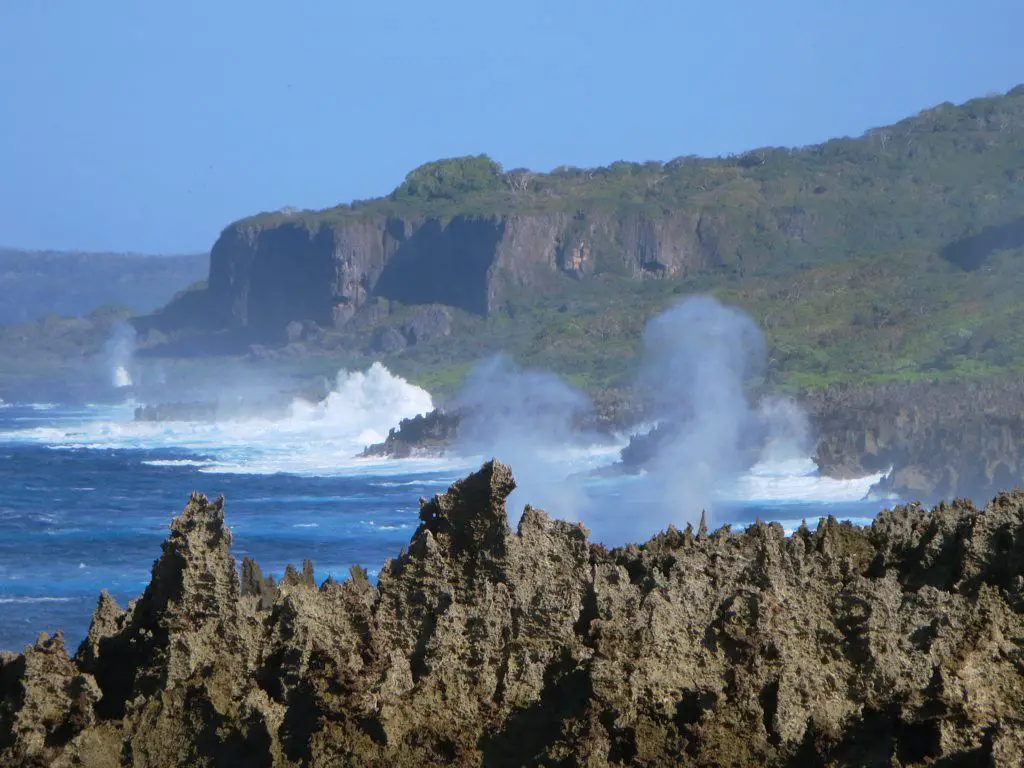
In the jagged limestone along the south-western coast of Christmas Island have formed numerous noisy blowholes. The sight is even more impressive during the mass migration of red crabs.
Pirates Bay Blowhole
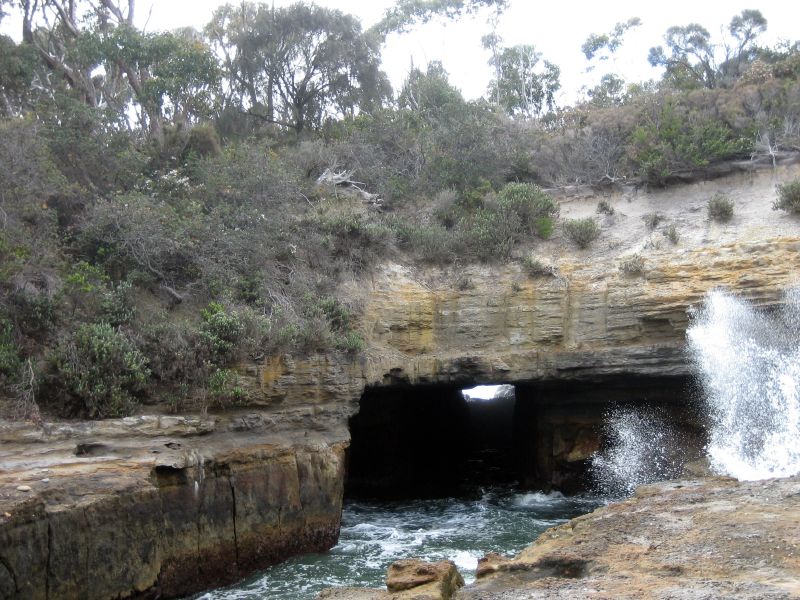
Sea cave with a collapsed roof – blowhole. At rough weather, the splashes are up to 10 m high. The blowhole is some 90 m from the sea.
Kiama Little blowhole
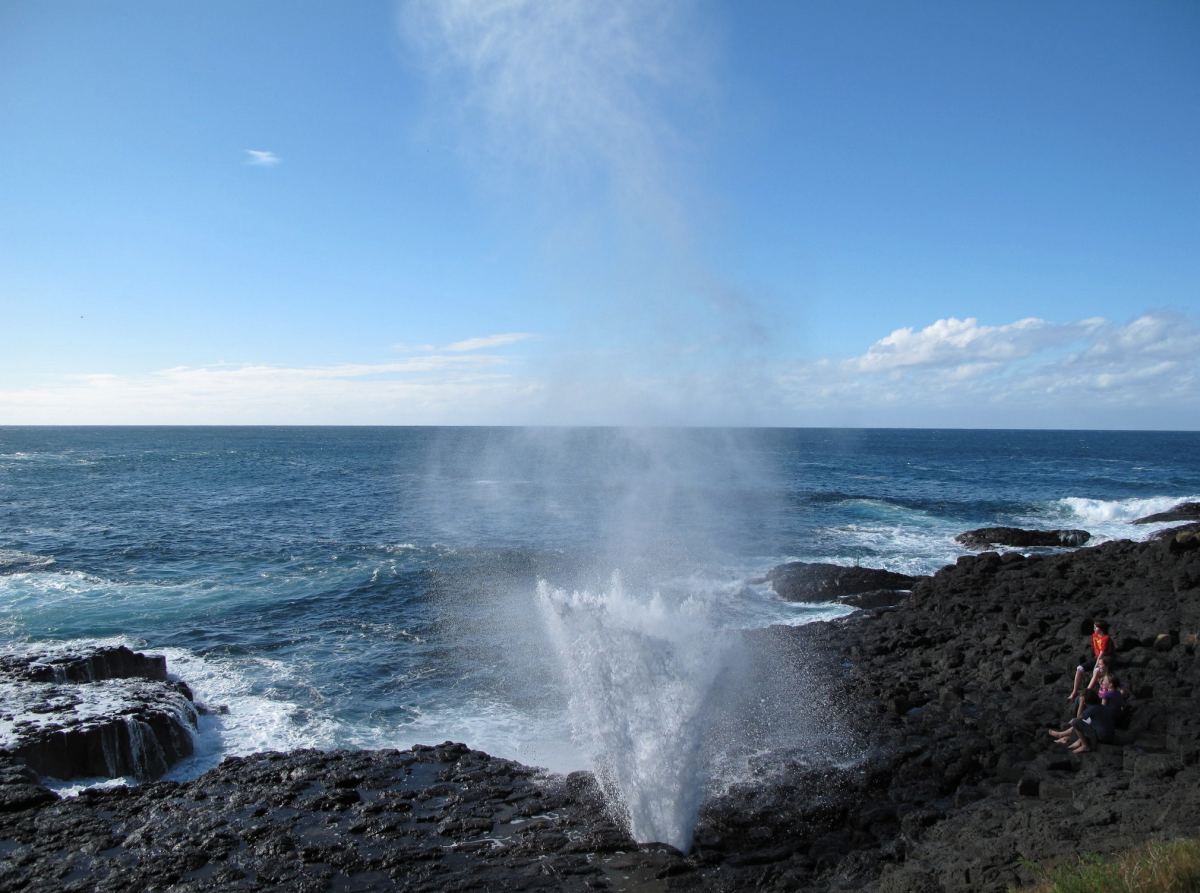
Smaller blowhole if compared to the better known Kiama Blowhole further north. This blowhole though is more reliable – it has a narrower nozzle and thus needs less powerful waves to create a fountain.
False Entrance Blowholes
Deep blowholes, penetrated by the wave energy through 30-40 m thick rocks. At high swell jets of water rise from the holes. Usually, only air is pushed through the holes with intimidating howls.
Dirk Hartog Island Blowhole
Impressive blowhole at the base of some 40 m high seaside cliffs. At high swells, it creates a deafening noise and shoots up to 60 m high. Then it can be seen from some 20 km distance. Usually it is around 10 m high.
Thunder Bay Blowholes
Unusually powerful blowholes. Here the coastal cliffs (Zuytdorp Cliffs) are more than 100 m high and the wave energy has pierced the rocks, creating several blowholes. If the conditions are right, the splashes are forced up the cliffs and reach the daylight, rising up to 20 m high. There are several more blowholes in this area.
Torndirrup Blowholes
Here sea waves create fountains as they hit the crevasses in the granite.
Whale Rock blowhole
A blowhole that sometimes gushes a fountain of mist and water. Then the rock whistles and whooshes. Aborigines called this place – Whining Rock – after an abandoned woman who was crying here.
Quobba Blowholes
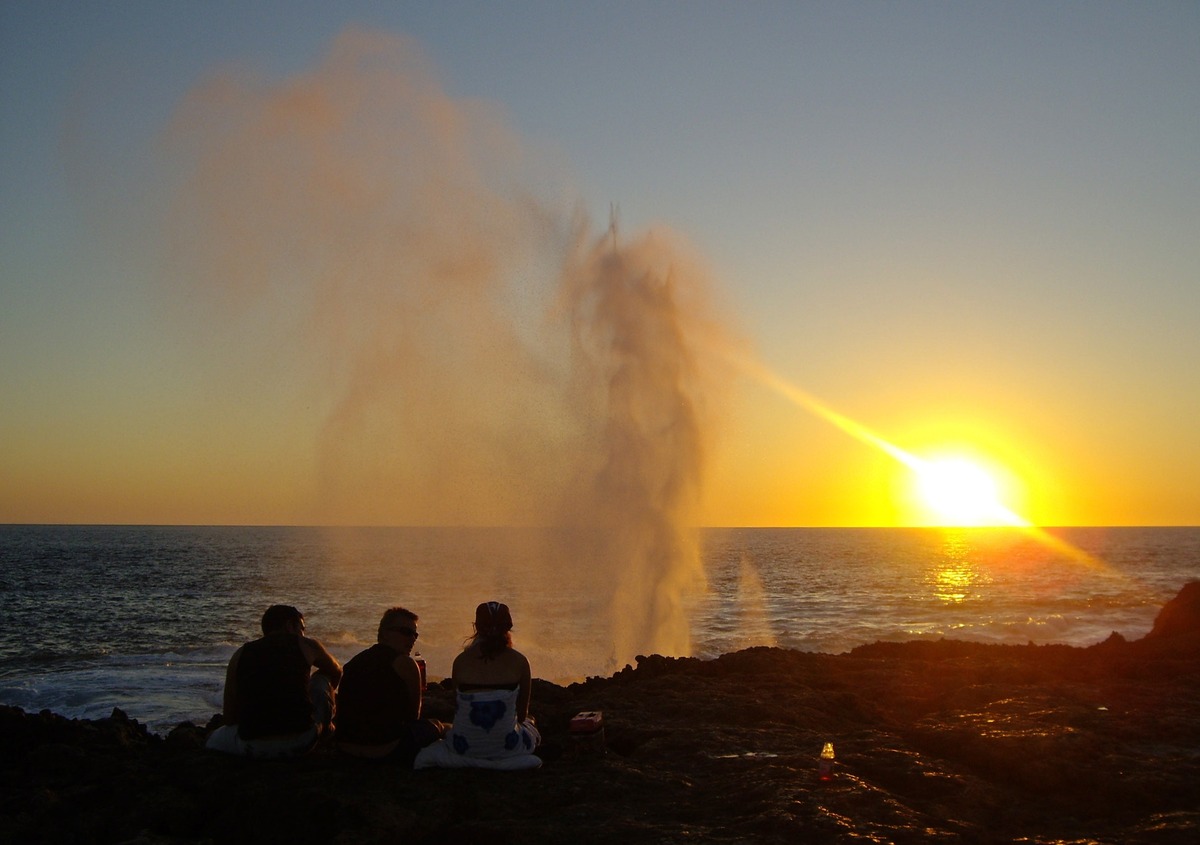
Wonderful sight – a group of some 30 blowholes. Water jets are beating up to 30 m high and even higher.
Bicheno Blowhole
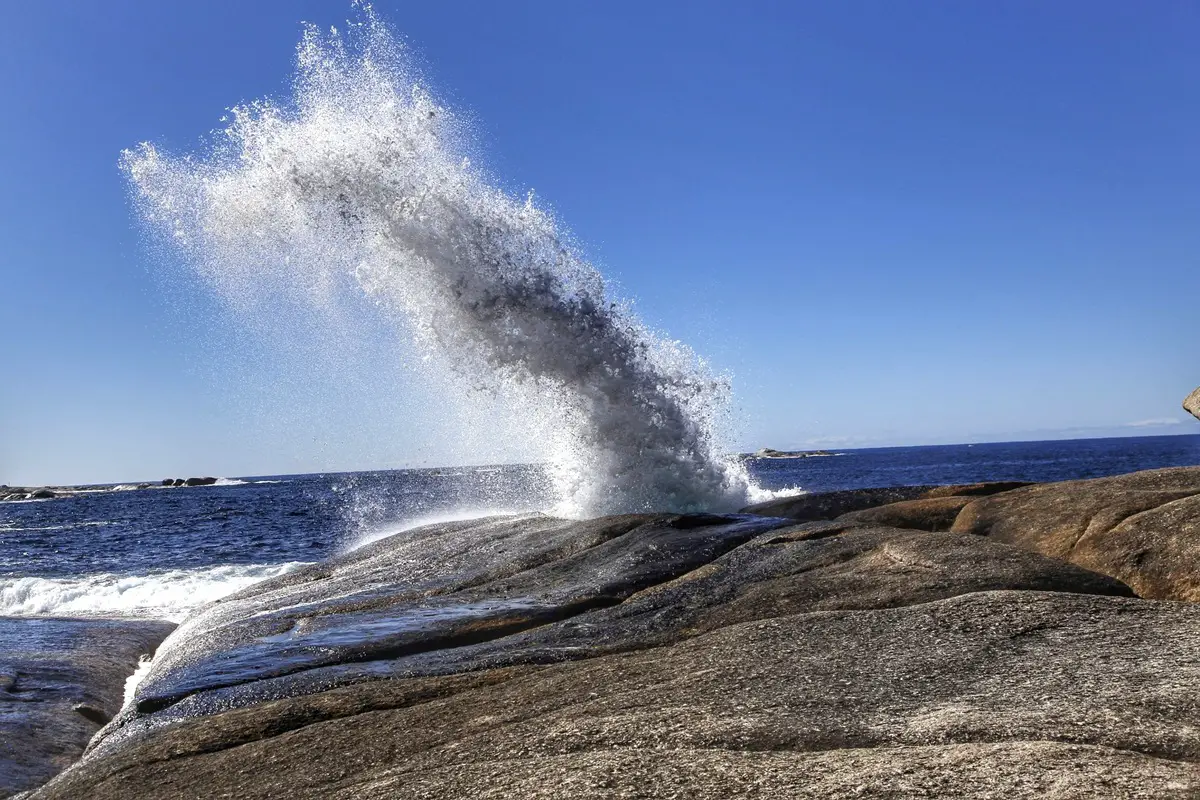
Impressive, picturesque blowhole that creates a slanted fountain. During the storms it can get up to 20 m high and might be even dangerous because it hits unexpectedly and with huge power. Blowhole has formed in granite rocks.
